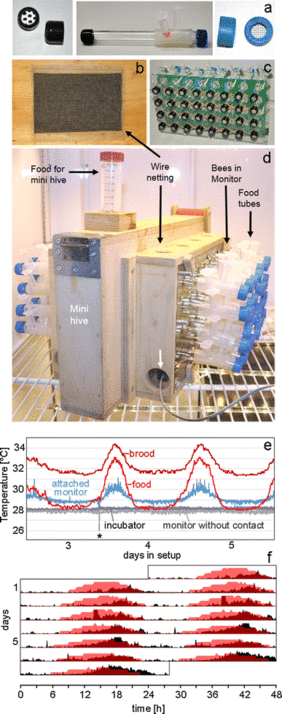A new device for monitoring individual activity rhythms of honey bees
23.08.2016Within the SFB1047 project of Charlotte Förster and in cooperation with the Department of Ecology, Kathi Beer developed a new activity monitor that allows for the first time to monitor the activity of single honey bees that are in contact with their colony.
Chronobiological studies of individual activity rhythms in social insects can be constrained by the artificial isolation of individuals from their social context. We present a new experimental set-up that simultaneously measures the temperature rhythm in a queen-less but brood raising mini colony and the walking activity rhythms of singly kept honey bees that have indirect social contact with it. Our approach enables monitoring of individual bees in the social context of a mini colony under controlled laboratory conditions. In a pilot experiment, we show that social contact with the mini colony improves the survival of monitored young individuals and affects locomotor activity patterns of young and old bees. When exposed to conflicting Zeitgebers consisting of a light-dark (LD) cycle that is phase-delayed with respect to the mini colony rhythm, rhythms of young and old bees are socially synchronized with the mini colony rhythm, whereas isolated bees synchronize to the LD cycle. We conclude that the social environment is a stronger Zeitgeber than the LD cycle and that our new experimental set-up is well suited for studying the mechanisms of social entrainment in honey bees.
Beer K, Steffan-Dewenter I, Härtel S, Helfrich-Förster C. 2016. A new device for monitoring individual activity rhythms of honey bees reveals critical effects of the social environment on behavior. J Comp Physiol A Neuroethol Sens Neural Behav Physiol 202:555–565.
10.1007/s00359-016-1103-2









